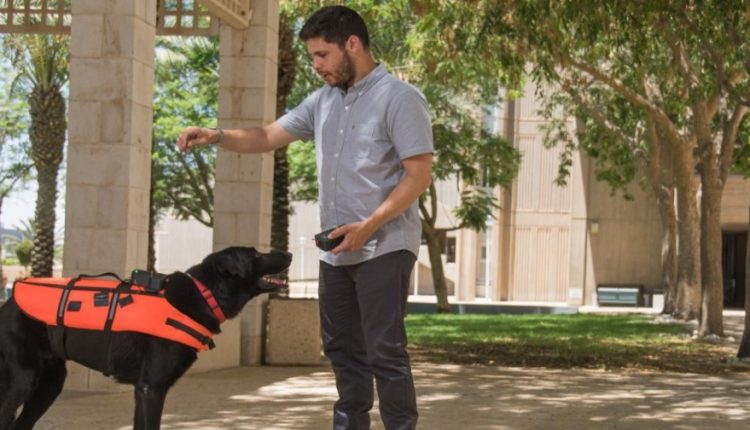People are already embracing wearables to do everything from measure their heart rate to playing their favorite tunes. Now, a vest for dogs, outfitted with haptics technology, could help deliver commands over long distances or in places where the human cannot directly interact with his canine helper.
An interdisciplinary research team at Ben-Gurion University of the Negev (BGU) have discovered that dogs can be trained to respond to haptic vibration commands while wearing a modified canine vest developed by the team.
Haptics technology simulates the senses of touch and motion, which is especially helpful in a remote operation or computer simulation where the user is not able to interact with and feel physical objects.
The technology may be useful for delivering remote commands to dogs for use in search and rescue, assisting disabled handlers, and other service animal applications.
“Our research results showed that dogs responded to these vibrotactile cues as well or even better than vocal commands,” says Amir Shapiro, director of the Robotics Laboratory within BGU’s Department of Mechanical Engineering. “Our current proof-of-concept study shows promising results that open the way toward the use of haptics for human-canine communication.”
The modified, commercially available mesh canine vest contains four small vibrating motors positioned over a dog’s back and sides that can be used to train or direct dogs to respond to different vibrations sent via wireless remote control. The handler can elicit different commands by controlling the site and duration of vibrations. In this demonstration video, Tai, a six-year-old Labrador retriever/German shepherd crossbreed, responds to several distinct commands, such as “spin,” “down,” “to me,” or “backpedal.”
Future research will test the haptic vest technology on different breeds, ages and training experience, and will integrate more advanced devices into search and rescue, military work dog and service dog programs.

